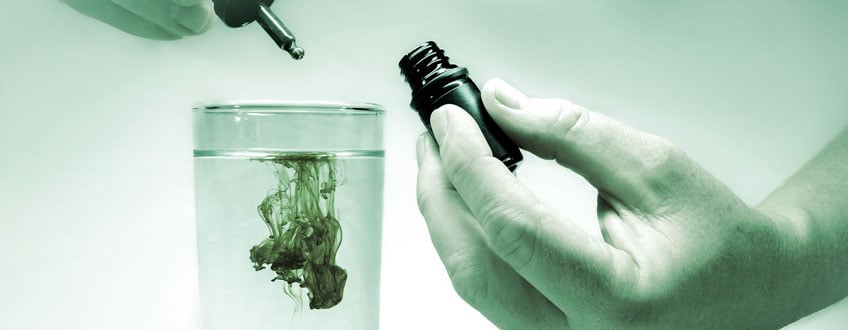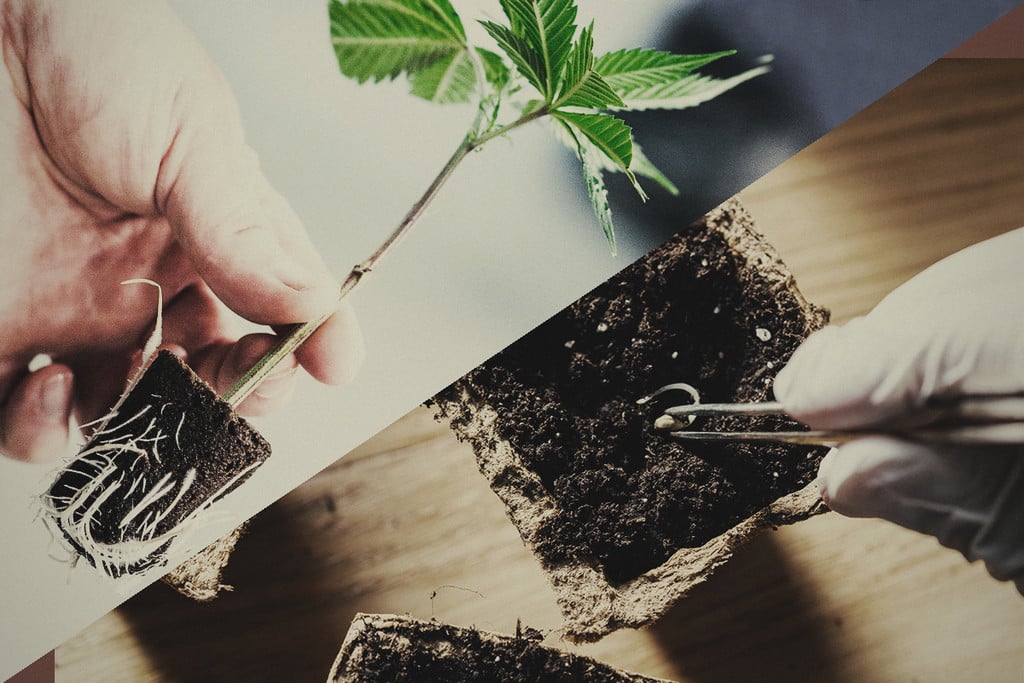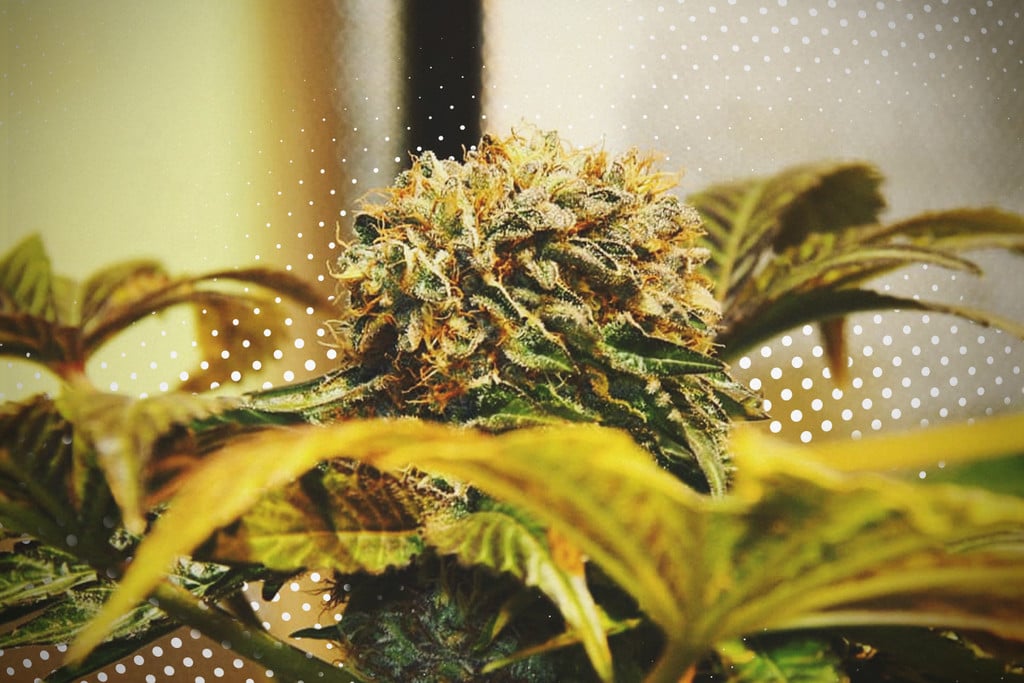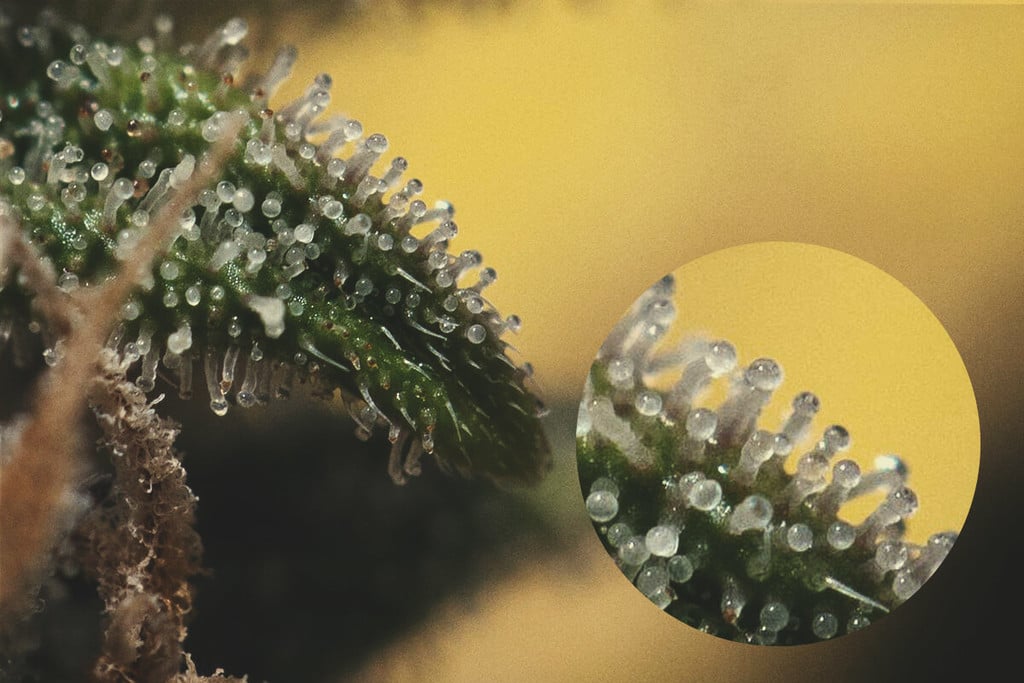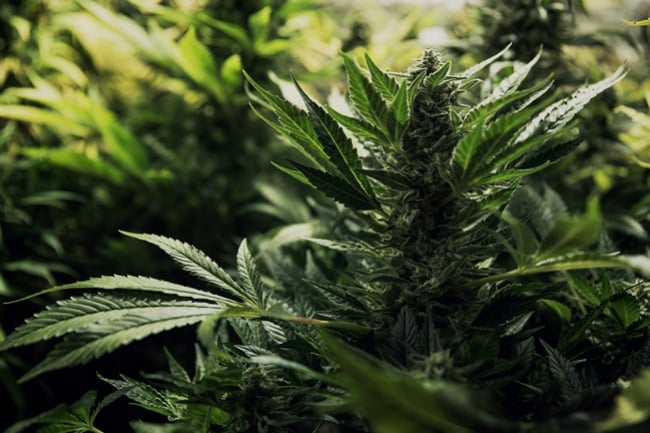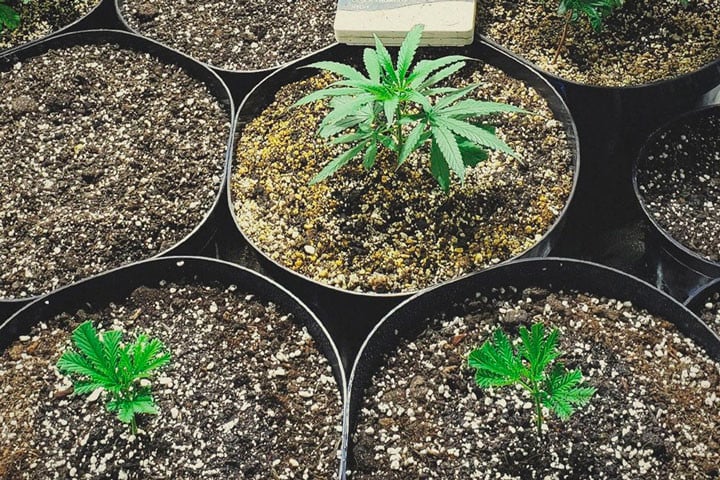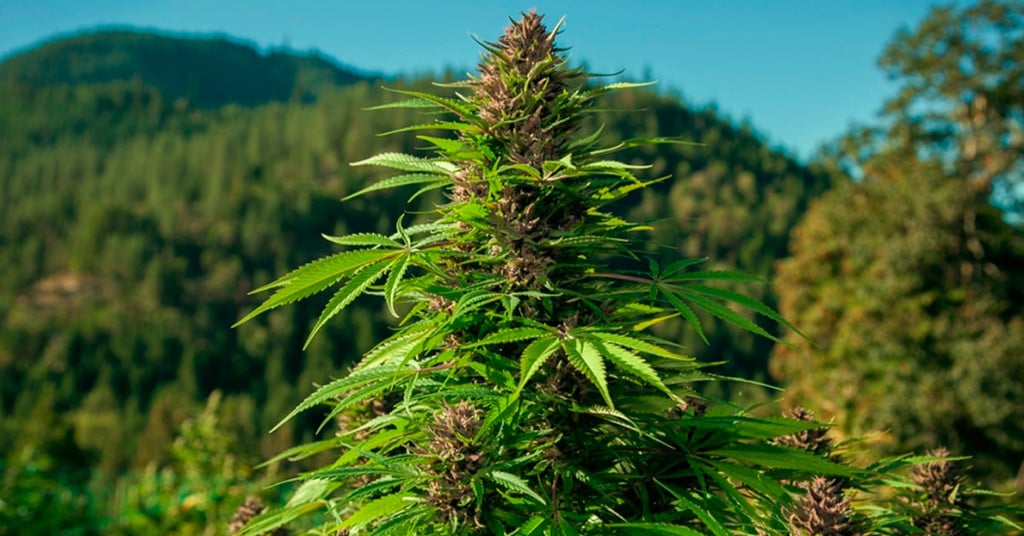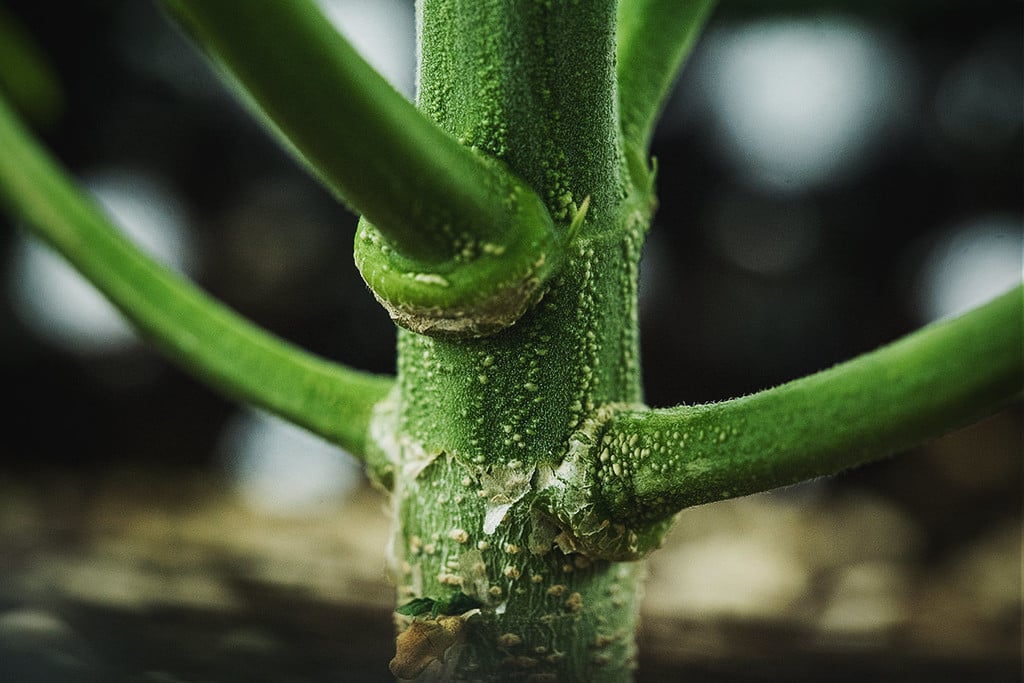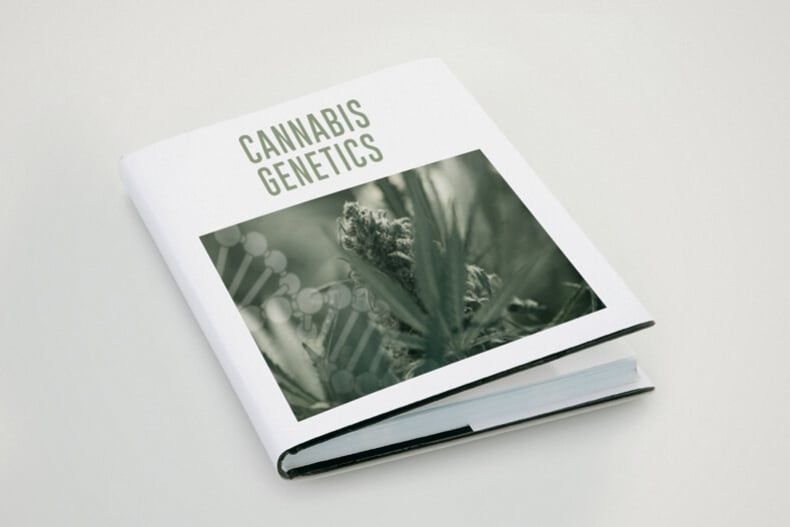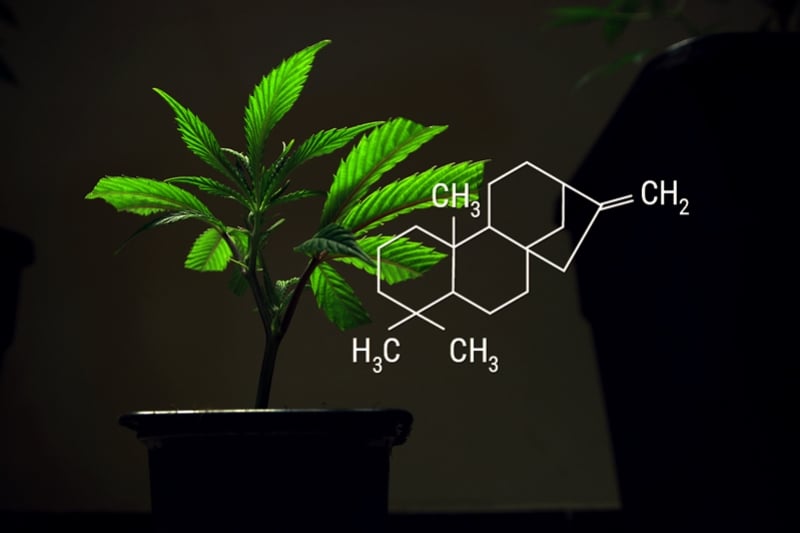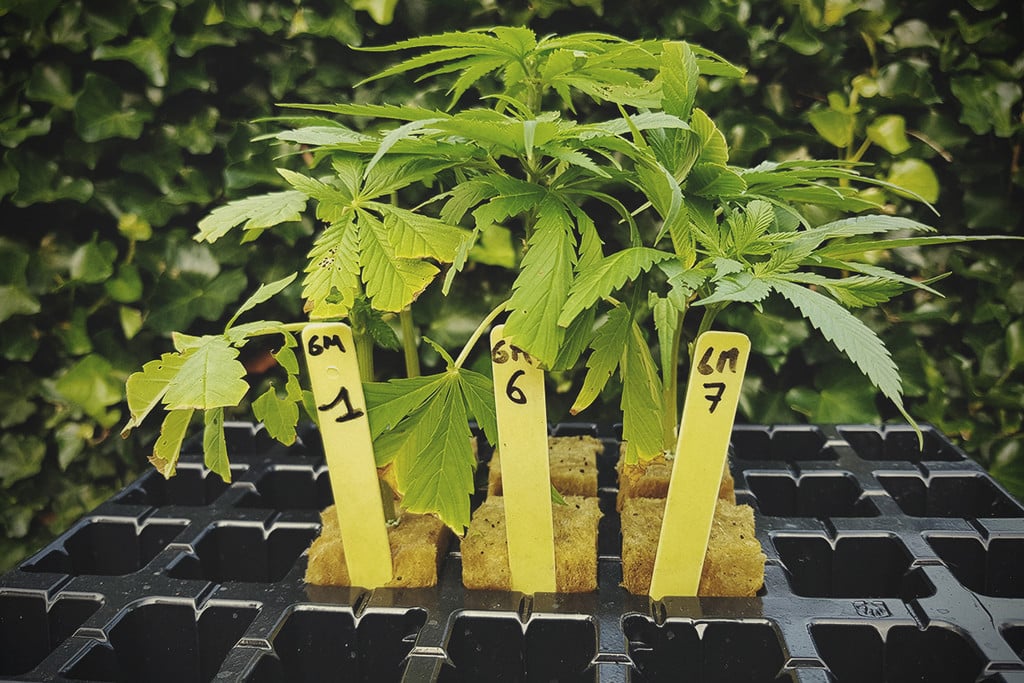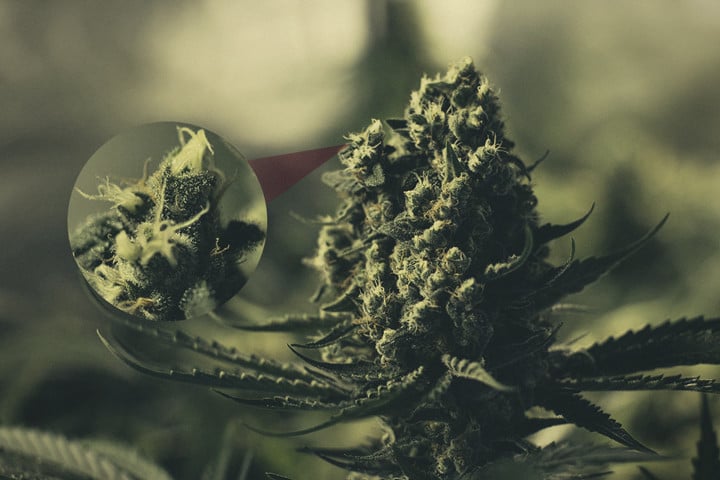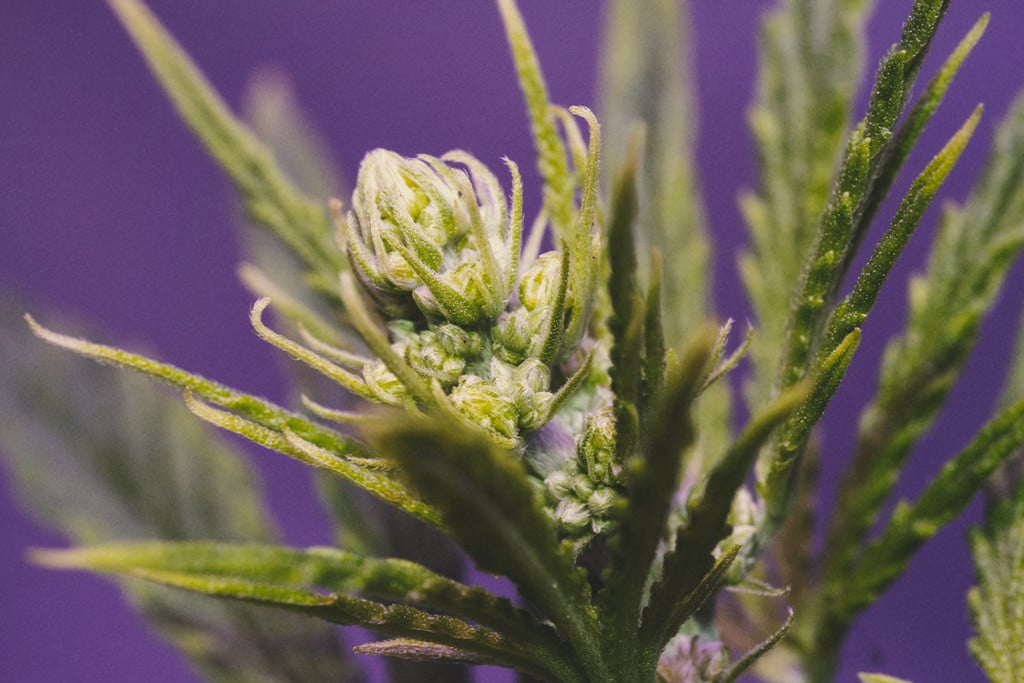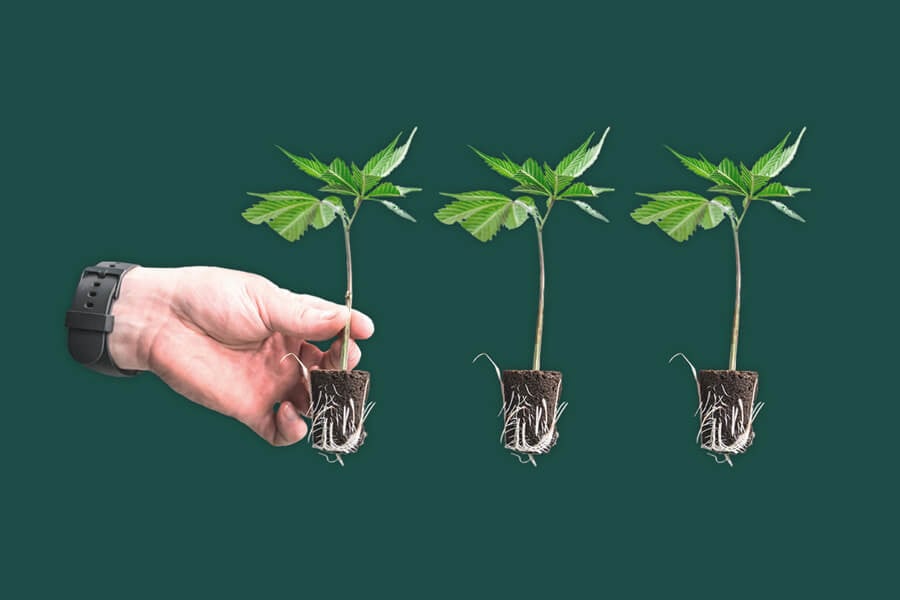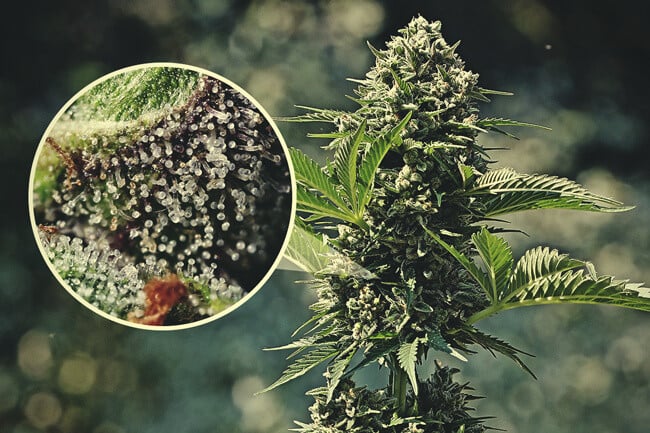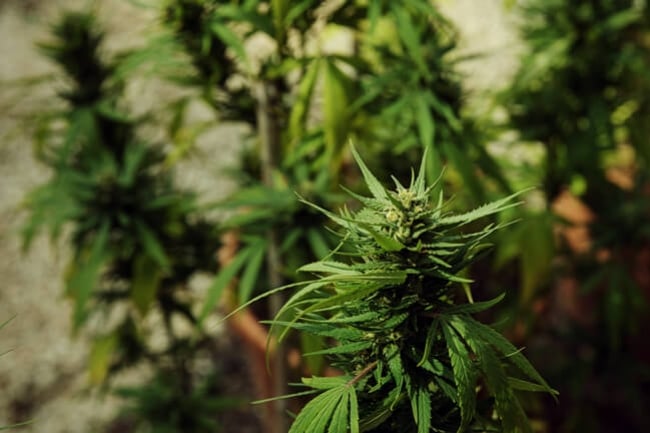.
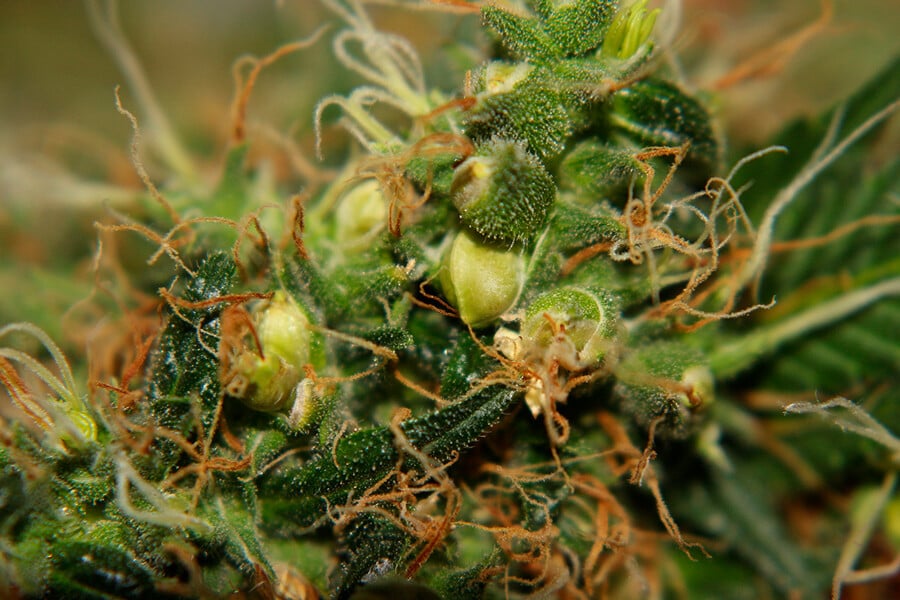
How To Make Feminized Cannabis Seeds Like The Pros
Growing from feminized cannabis seeds is a space and resource-efficient way of getting all strains, all the time. Find out how to create your own feminized cannabis with Royal Queen Seeds.
Making feminized seeds
Growing cannabis is all about resinous flowers, trichomes, and rich cannabinoid profiles. These splendid characteristics can only be found on the female flowers. Having gardens full of robust, un-pollinated sinsemilla females means jars full of mind and body-friendly, crusty nuggets.
The only bummer, unless you grow from clones, is that cannabis is wired to produce about 50% male seeds and 50% females. It is just the nature of the beast.
Wouldn’t it be sweet if it was possible to grow all females from seed, every plant, every time?
Well, that is where the feminizing technique comes into play: two methods of manipulating the cannabis plant to produce only females from seed, every-time. To be truthful, it isn’t every single time. But 99% of the time is a pretty good number, and could be considered entirely male risk-free.
The general practice behind feminization is that female plants are forced to produce pollen, which is in turn used to pollinate other female plants. The outcome? Resulting seeds will be feminized, with no risk of further pollination.
Contents:
Why feminize?
Feminized seeds are super efficient for indoor and outdoor gardeners. Area, time, and resources aren’t being given to plants that will be thrown away two weeks after the 12-12 flip. Similarly, outdoors where a large plant can consume a lot of time and resources in upkeep prior to the autumn show of flowers, feminized plants are also a good way to reduce guerrilla crop pollinating. There’s nothing worse than bush-bashing out to a well-hidden crop only to find a rogue male or two have impregnated every female plant.
Inhibit that ethylene
“Applications that reduce the ethylene level in tissues or antagonise the action of ethylene causes the formation of male flowers instead of female ones” — Paraphrase, Byers et al., 1972.
There are a number of solutions that can be sprayed on female plants to create male pollen sacs: benzothiadiazole, gibberellic acid, silver thiosulphate, silver nitrate, and colloidal silver.
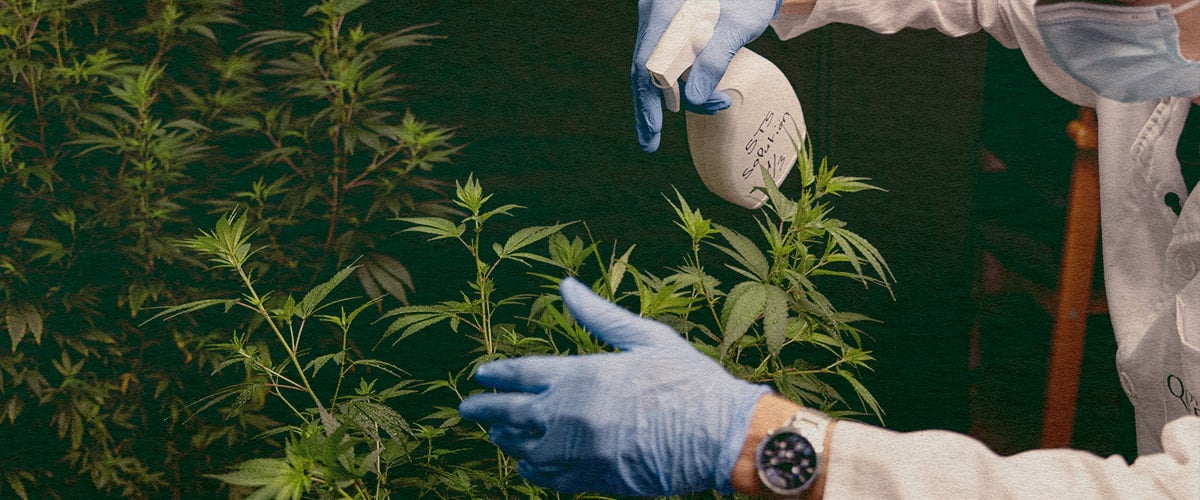
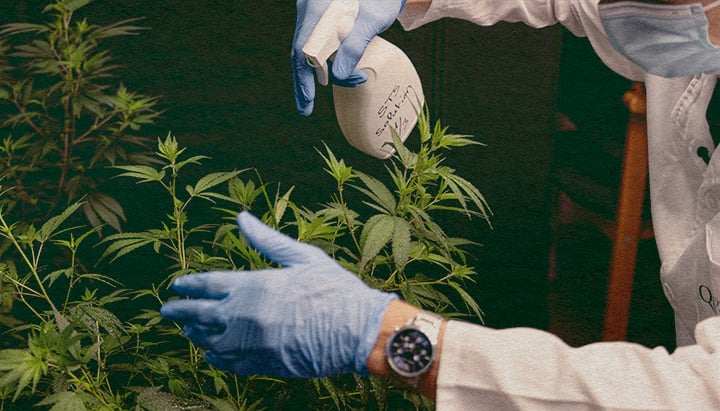
Colloidal silver is by far the easiest to source or make. It is non-toxic, non-caustic, and can be bought from a pharmacy or easily online. The other solutions can be dangerous, difficult to get a hold of, and expensive—except gibberellic acid, which can be found in nurseries, but is not as effective as colloidal silver. But if you want to watch some freaky plant growth just for the fun of it, give gibberellic acid a try. It is a growth stimulant and makes plants stretch and stretch.
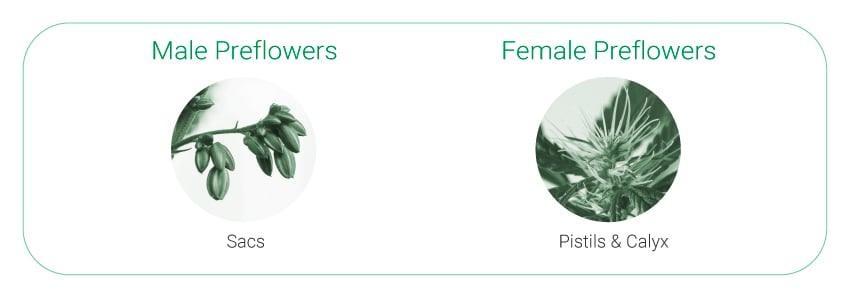
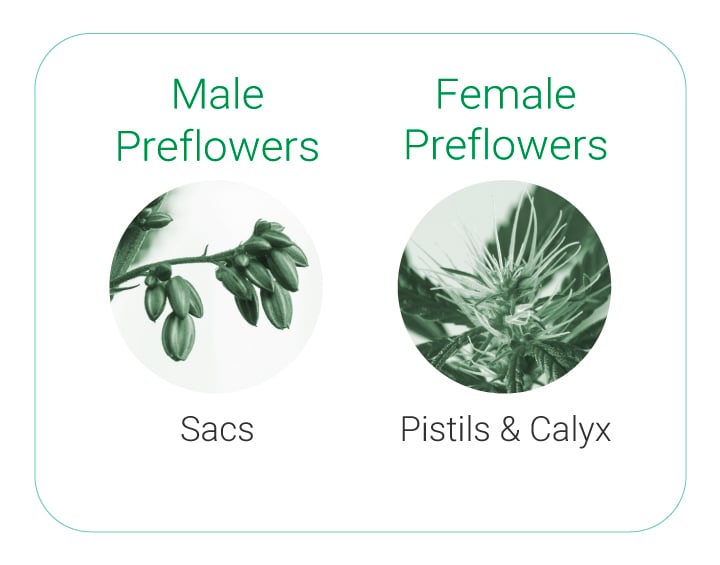
Technique 1: Colloidal silver |
Colloidal silver is a distilled water-based solution in which microscopic particles of silver are suspended. The nature of colloids means the particles will never settle out and can’t be removed by normal filtering. Colloidal silver is available commercially, or you can make your own if you want to totally geek out (see how-to section at the end). It has numerous uses as an alternative medicine. For example, it is used to soothe burns, as an antiseptic and digestion stimulant in people, and as a fungal control in horticulture.
Be sure the strength is at least 15ppm, preferably 30ppm. Less than 15ppm produces male sacs with little viable pollen.
To begin with, select a plant that has the characteristics you want to preserve. Feminizing clones is the usual practice as the growth, flowering, and resin characteristics from the mother are already known. There is no need for any vegetation time once a clone is well-rooted. Simply pot the clone into a small pot, give it a day or two to recover, and begin a 12-12 light cycle right away. A pollen-producing plant only needs to be small as cannabis produces copious amounts of pollen.
Hint: Make two clones once a plant has been selected, one to be feminized and one to be left for pollination. This way, a separate breeding space is created and accidental seeding of other plants, or an accidental sneeze pollinating a whole grow cupboard, is avoided.
Plants can be induced to grow male sex organs as late as four weeks into flowering. Though spraying one week prior to the light changeover is recommended for clones. If a plant grown from seed is being used, wait until the plant has sexed before spraying so you can be sure it is female.
Spray the plants to be feminized with colloidal silver every day, and three times a day if you can manage. Soak them well. Do this for two weeks, then leave the plants to grow as normal. Some growers report getting results after spraying for only 5–10 days.
When sexing begins, male pollen sacs will develop instead of female calyxes and pistils. Male plants mature much faster than females, and viable pollen can be expected within 3–4 weeks once the plant has been sexed. Some growers will spray until the plant shows sexual growth, just to be sure the method has worked. Make sure these plants are well-isolated from any flowering females. A burst pod can release millions of pollen spores, and it only takes one spore per hair to create a seed.
Don’t smoke it!
Once the plants have been sprayed with colloidal silver and the pollen is collected, they are write-offs—86 them and don’t smoke them. Giving them a thorough rinse will not work. The colloidal silver is a systemic treatment absorbed into the plant through the foliage and not a topical application. Be safe and bin them.
Technique 2: Rodelization |
Sinsemilla is an unnatural state for cannabis. Without human intervention, it would be rare to find an unpollinated female in the wild—unless it was sterile. When sinsemilla plants are left to go beyond their desirable maturation stage by a number of weeks, the plant, through whatever amazing processes evolution has bestowed, knows it has not been pollinated. As a last ditch effort at propagation, it will produce male pollen sacs in an effort to self-pollinate.
This is not the result of genetic or stress-induced hermaphroditism. They are genuine XX chromosome female bananas. With all the genetic information from the female and no Y chromosome, using rodelized pollen creates female-only seeds, although as with colloidal silver, an occasional male may appear.
Harvesting pollen and pollination
There are a number of harvesting methods employed to catch pollen.
- Cover the top of the pot with plastic or card to catch pollen as it autumns, or modify a plastic drink cup to shroud the plant and catch falling pollen.
- Fix a clear plastic bag, perforated at the top for air exchange, around the whole plant.
- An experienced eye will remove each flower pod prior to it bursting completely open to be sure of catching every spore.
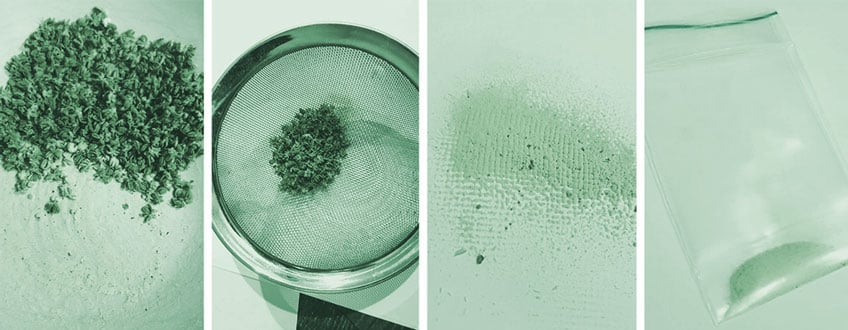
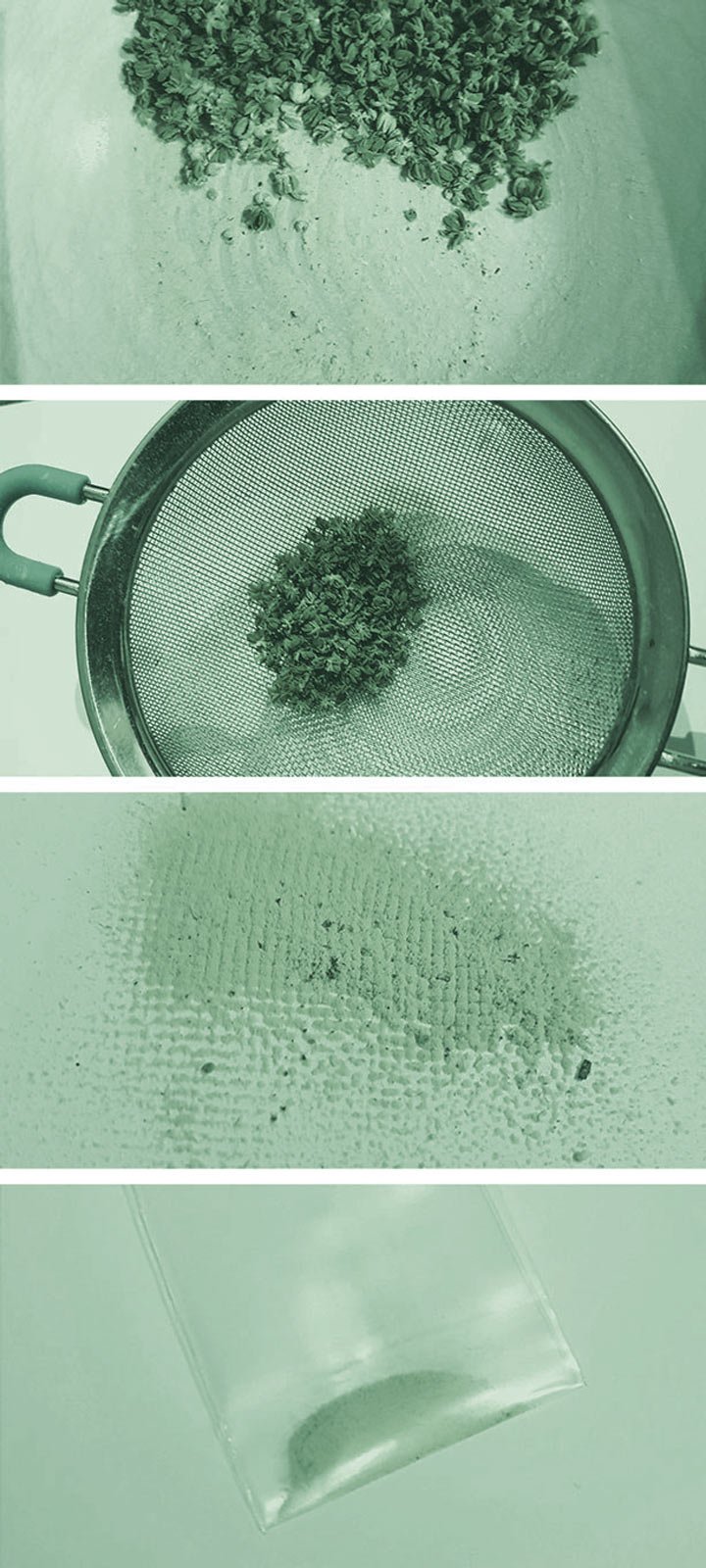
Pollinating a female is the easy bit. Depending on how many seeds you want to make, there are a couple of methods that can be used.
- Using a watercolour or other fine, soft brush or even a cotton bud, dip into your pollen collection and gently apply to the chosen flower. Although thousands of viable spores will be on the end of the brush, enough to pollinate a whole plant, the trichomes on the surface of the pistils will greedily glue everything you offer them. So dip into your pollen stash a few times as you dust.
- For lots of seeds, put pollen in a bag and put over a whole branch or a whole plant, shake well, and leave for twenty four hours.
- It is possible to pollinate different branches with different pollens and have a breeder plant that has 1, 2, or 15 different crosses on it.
- It is also possible to self-pollinate the plant from which the male parts were created. This won’t produce as many seeds as pollinating a separate plant because less female flowers are produced and many are nonviable because of the feminization process.
Growing feminized plants
Treat feminized seeds as you would any other seed from germination to veg, and veg through flower. Observation is where it’s at now, you want the best plants for your garden. Ideally, setting up a separate vegetation/flower space where a number of plants can be grown lets your standard grow space continue with uninterrupted production.
Plants bred using feminization are homozygous. This can have two effects that can’t be assessed until the seeds are grown. Homozygosity will increase the dominant or recessive traits of the parent in the progeny, so features you don’t want and do want can be amplified. Genetics is a weird, weird thing.
Just as with standard male to female crossings (which is a heterozygous process), a number of plants will need to be grown and the best selected for mother plants and future breeding. With enough room, hundreds if not thousands of new plants can be grown in order to select the best of the best phenotypes.
Fembots rule
With a bit of aforethought, it is possible to set up an efficient feminization breeding programme—and have female seeds from your favourite phenos on hand all the time. You never know, you might discover the next big thing!

Making your own colloidal silver
The easiest and relatively inexpensive way—considering how much money is potentially saved by not growing resource and time-consuming males—is to buy a colloidal silver generator, which is the no-fuss plug and play option. Or, make your own, which is quite straightforward and doesn’t require any special skill.
Colloidal silver is formed by passing a current from a pure silver electrode through distilled water. This simple electrolysis is all there is to it. Although distilled water does not conduct electricity very well due to its lack of mineral content, enough is passed through to create micro silver particles and silver ionisation. Sounds technical, but it really isn’t.
What you will need
|
|
How to
- Make sure the adapter is set at 9–12 volts.
- Strip each end of the wires using scissors or wire strippers.
- Securely connect the alligator clips to one end of each wire to ensure a good flow of current. Soldering is best.
- Fix the wires to the positive (red) and negative (black) terminals on the unplugged adapter or onto the battery.
- Put a piece of silver in the jaws of each clip. Don’t touch them together. Fill a glass jar or glass beaker ¾ full with the distilled water. 500ml will easily do two plants.
- Suspend each silver/alligator clip combo in the water on opposite sides of the glass.
- Plug in and turn on the adapter. If you are using a battery, the process began the moment the electrodes were submersed in the water.
- After 20 minutes, remove the electrodes and test with the ppm meter. 15ppm (0.5) and over is the goal. The solution should become a pale gold colour.
- When finished, clean the black silver oxide off the silver electrodes and put the kit into storage until next time.
- Shop the colloidal silver in an amber-tinted bottle in a cool place. It is light and temperature-sensitive. However, don’t put it in the fridge.
